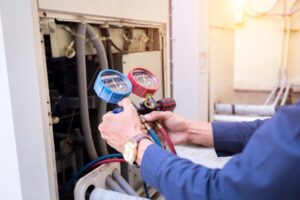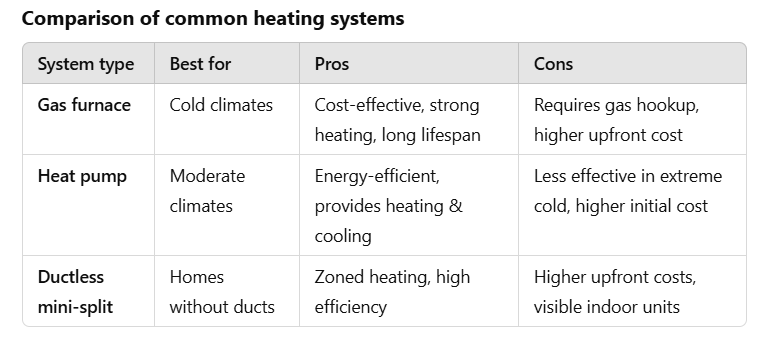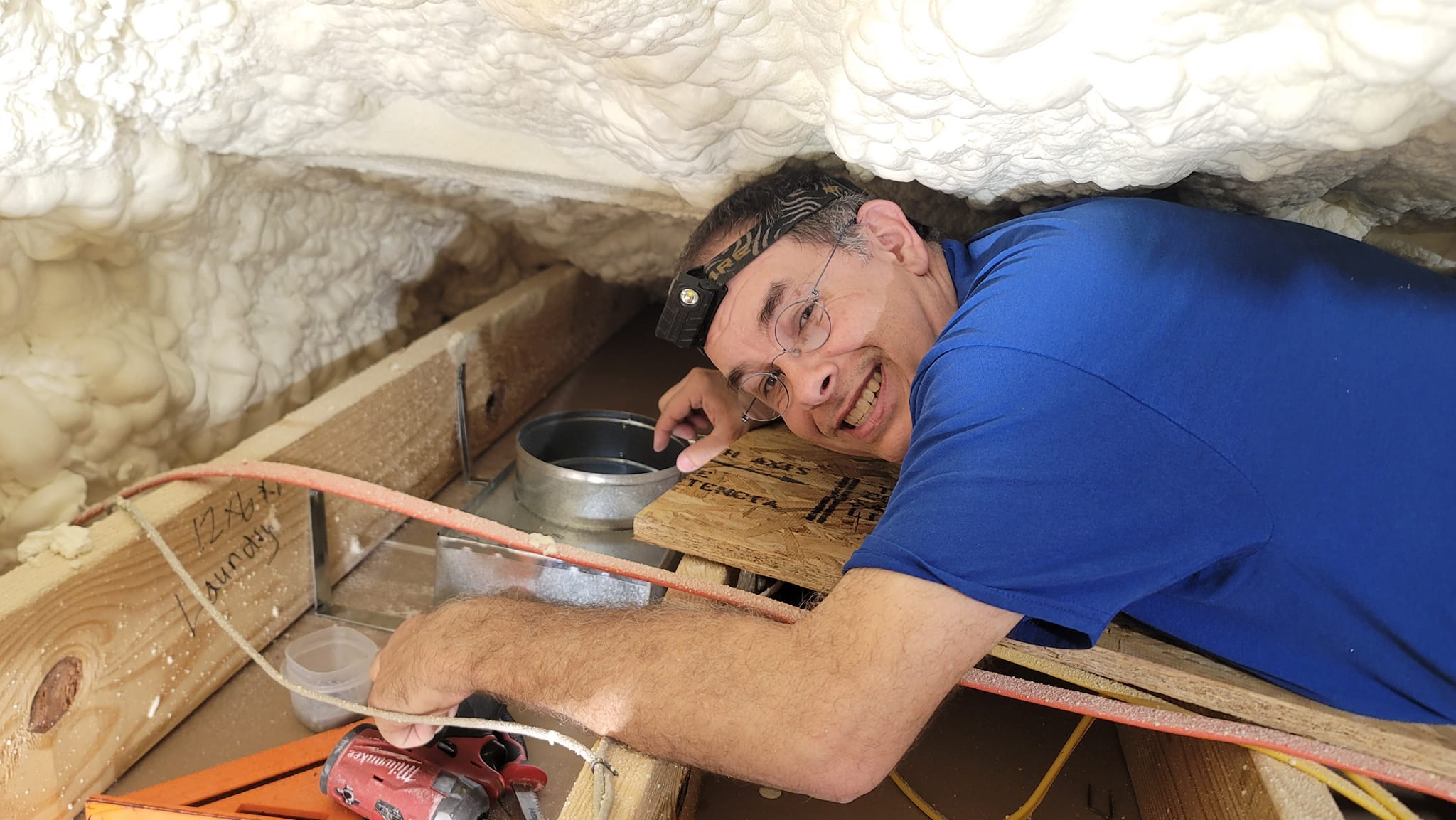Did you know that nearly 75% of emergency heating repairs happen in the middle of winter? That’s because when temperatures plummet, heating systems are pushed to their limits—making existing issues much more likely to escalate into full-blown breakdowns. A malfunctioning system doesn’t just mean a chilly home; it can also lead to skyrocketing energy bills, expensive emergency repairs, and even safety hazards such as carbon monoxide leaks.
The best way to avoid these problems? Ensuring your heating system is installed correctly and fully optimized before winter arrives. A timely heating installation can help you avoid last-minute service calls, reduce energy costs, and keep your home warm and comfortable throughout the season. According to the U.S. Department of Energy, a properly installed and well-maintained heating system can operate up to 25% more efficiently, meaning better performance, lower energy waste, and long-term savings.
For homeowners in colder regions like Forney, TX, where winter temperatures can fluctuate, a well-functioning heating system is not just a luxury—it’s a necessity. That’s why timely heating installation is crucial to ensure your system is ready when you need it most. But how do you know if your current system is still up to the task? While some warning signs are obvious, others are more subtle. If you’re wondering whether it’s time for an upgrade, here are some key indicators to watch for.
How Do You Know If You Need a New Heating System?
When you find yourself frequently adjusting your thermostat, noticing strange noises, or experiencing rising energy bills, it could be a sign that your heating system is struggling. According to the U.S. Department of Energy, heating systems older than 10-15 years often operate at much lower efficiency and are prone to breakdowns. If you’re facing frequent repairs, consider a timely installation before winter hits.
Signs you need a new heating system:
- Your system is over 15 years old and struggling to maintain consistent heat.
- You’ve had multiple repairs in the past couple of years.
- Energy bills keep rising despite no major changes in usage.
- The system makes unusual noises like banging or rattling.
Ignoring these warning signs can set you up for an expensive and inconvenient surprise when you least expect it. A struggling heating system doesn’t just mean a chilly home—it also puts additional strain on your electrical and ventilation systems, leading to even bigger repair bills down the line. According to the Air Conditioning, Heating, and Refrigeration Institute (AHRI), neglected heating systems are far more likely to experience sudden failures, often requiring costly emergency fixes when demand for HVAC services is at its peak.

Beyond mechanical failures, an outdated or inefficient system can have a major impact on your home’s indoor air quality. Clogged filters and worn-out components can circulate dust, allergens, and pollutants, making the air in your home less healthy. If you or your family experience frequent allergies or respiratory issues, your heating system could be part of the problem.
To avoid these headaches, regular professional inspections are highly recommended. Simple maintenance steps—like cleaning filters, optimizing airflow, and ensuring all components are in top condition—can go a long way in extending the lifespan of your system and preventing breakdowns. Even better, a new heating installation can ensure you’re not stuck with an outdated unit that compromises both efficiency and air quality. With the right system in place, you can improve indoor air quality, reduce energy waste, and enjoy consistent warmth all season long. Plus, upgrading to a high-efficiency heating system could make you eligible for rebates and tax incentives, helping you save money while keeping your home warm and comfortable.
Signs of a Bad Heating Installation & How to Fix It
Getting your heating system installed properly is just as important as choosing the right one. A poor installation can cause all sorts of headaches—uneven heating, rising energy bills, and even serious safety hazards. The Air Conditioning, Heating, and Refrigeration Institute (AHRI) reports that nearly 75% of emergency heating repairs in winter come from poor installation or a lack of maintenance. That means many of these costly breakdowns could have been avoided with the right expertise from the start!
A professional installation ensures your system runs at peak efficiency from day one, helping you stay warm while keeping your energy costs in check. Investing in experienced technicians means fewer surprises, better performance, and peace of mind when the temperatures drop.
Why professional installation matters:
- Ensures balanced airflow and proper ventilation.
- Optimizes thermostat calibration for accurate temperature control.
- Prevents carbon monoxide leaks and fire hazards.
Now that you understand why professional installation is essential, you might be wondering—how long does the process actually take? Let’s break down what you can expect during a heating system installation.
Heating Installation Timeline: How Long Will It Take?
A big question homeowners often have is, “How long will my heating installation actually take?” The good news is that, in most cases, a standard heating installation can be completed within a single day. If it’s a straightforward replacement of an existing system, you’re looking at about 4-6 hours. However, if your installation involves upgrading models, modifying ductwork, or additional system enhancements, it could extend to a full day or slightly longer. Understanding the timeline can help you plan accordingly so you’re not left in the cold.
Installation timeline:
- Simple replacements (same system type): 4-6 hours.
- New system installations (upgrading models): 6-8 hours.
- Ductwork modifications/add-ons: Additional time may be needed.
One homeowner, Nick from Forney, TX, recently had his heating system upgraded. He was initially concerned about how long the installation would take and whether it would disrupt his day. However, his experience was surprisingly hassle-free. Our technician scheduled the work promptly, completed the installation within a day, and took the time to explain the process, even showing him the parts that were replaced. Nick appreciated the transparency and efficiency, giving him confidence that his heating system was installed correctly and ready for winter.
Nick’s experience highlights what a well-executed heating installation should look like—quick, efficient, and stress-free. A properly scheduled and professionally handled installation ensures your home stays warm with minimal disruption.
Choosing the Right Heating System for Your Home
Not all heating systems are created equal, and selecting the right one can impact your home’s comfort, efficiency, and energy costs. According to the U.S. Department of Energy, heating accounts for approximately 45% of residential energy use, making it essential to choose an efficient system that meets your household’s needs.
Factors to consider when choosing a heating system:
- Home size & layout – Larger homes may require zoned heating for better efficiency, as studies show that zoned heating can reduce energy consumption by up to 30%.
- Climate – Heat pumps work well in milder climates, while furnaces are better for colder regions. The Department of Energy states that heat pumps can provide up to three times more heating energy than the electricity they consume in moderate climates.
- Energy efficiency – Look for systems with high Annual Fuel Utilization Efficiency (AFUE) ratings for furnaces or Seasonal Energy Efficiency Ratio (SEER) ratings for heat pumps. A modern high-efficiency gas furnace typically has an AFUE rating of 90-98%, compared to older models that operate at 60-70% efficiency.
- Fuel type – Choose between gas, electric, or alternative fuel sources based on availability and cost. Natural gas furnaces are often 50% less expensive to operate than electric furnaces, depending on local utility rates.

Upfront vs. long-term costs – High-efficiency models may cost more initially but can save homeowners hundreds of dollars annually on energy bills.
Taking the time to weigh these factors can make all the difference in finding the perfect heating system for your home. Whether you’re looking for maximum efficiency, cost savings, or the best fit for your climate, making an informed decision now means fewer headaches—and lower bills—down the road. If you’re unsure where to start, consulting a professional can help tailor the best solution to your home’s unique needs.
Ensuring a reliable and efficient heating system
If you’re considering a heating system upgrade or need expert advice on installation, consulting with a knowledgeable HVAC professional can help you navigate your options with confidence. A timely heating installation not only ensures that your home stays warm when temperatures drop but also prevents costly emergency repairs and inefficiencies down the line. Choosing the right energy-efficient model and ensuring proper installation can make a noticeable difference in your home’s comfort and performance for years to come.
A reliable heating system is an investment in your home’s warmth and efficiency. If you’d like personalized recommendations or need insight on your existing setup, our team is happy to assist—whether you’re exploring an upgrade or just looking for expert guidance. With a timely heating installation, you can enjoy peace of mind knowing your system is ready to perform when you need it most.







